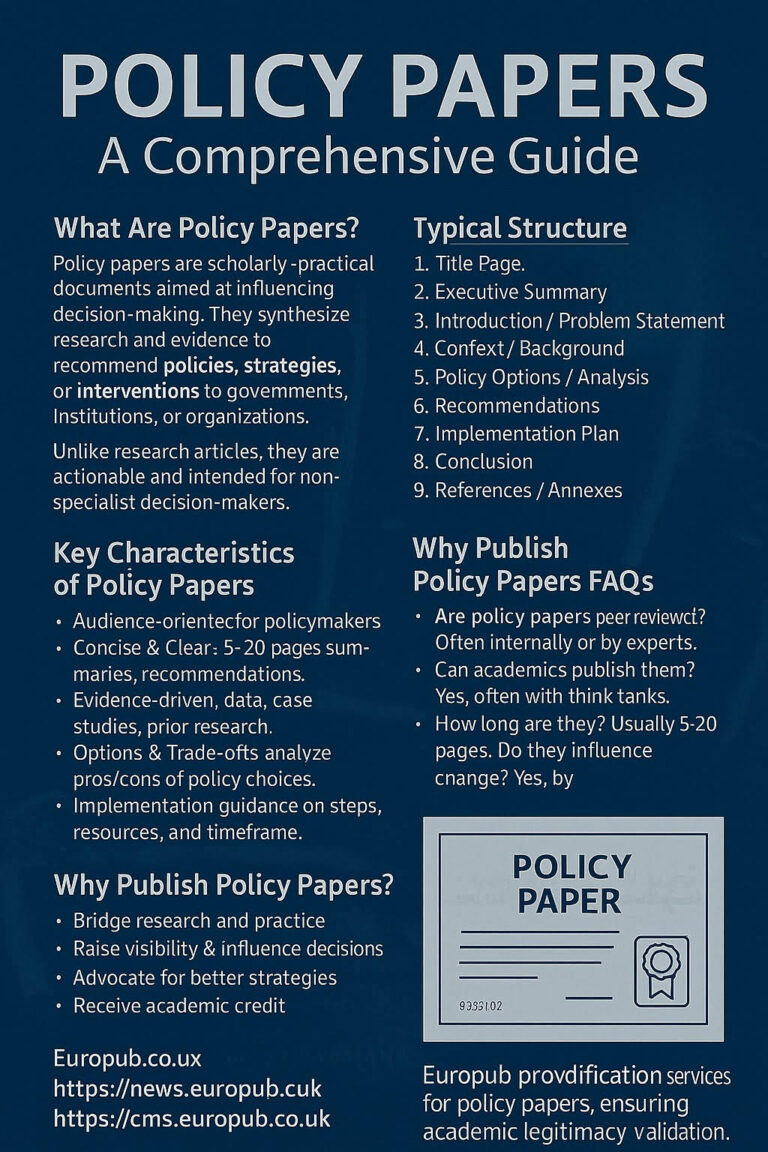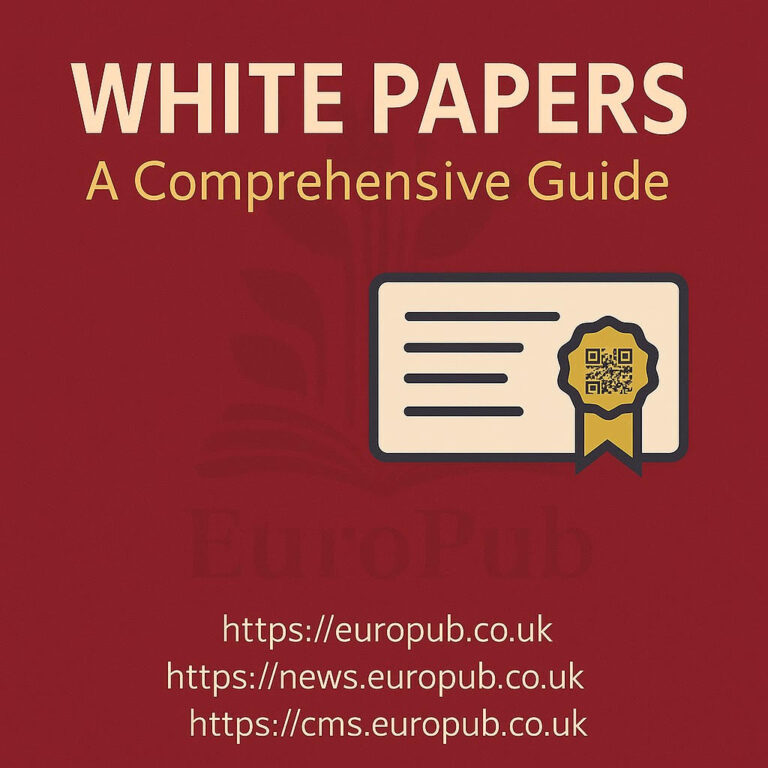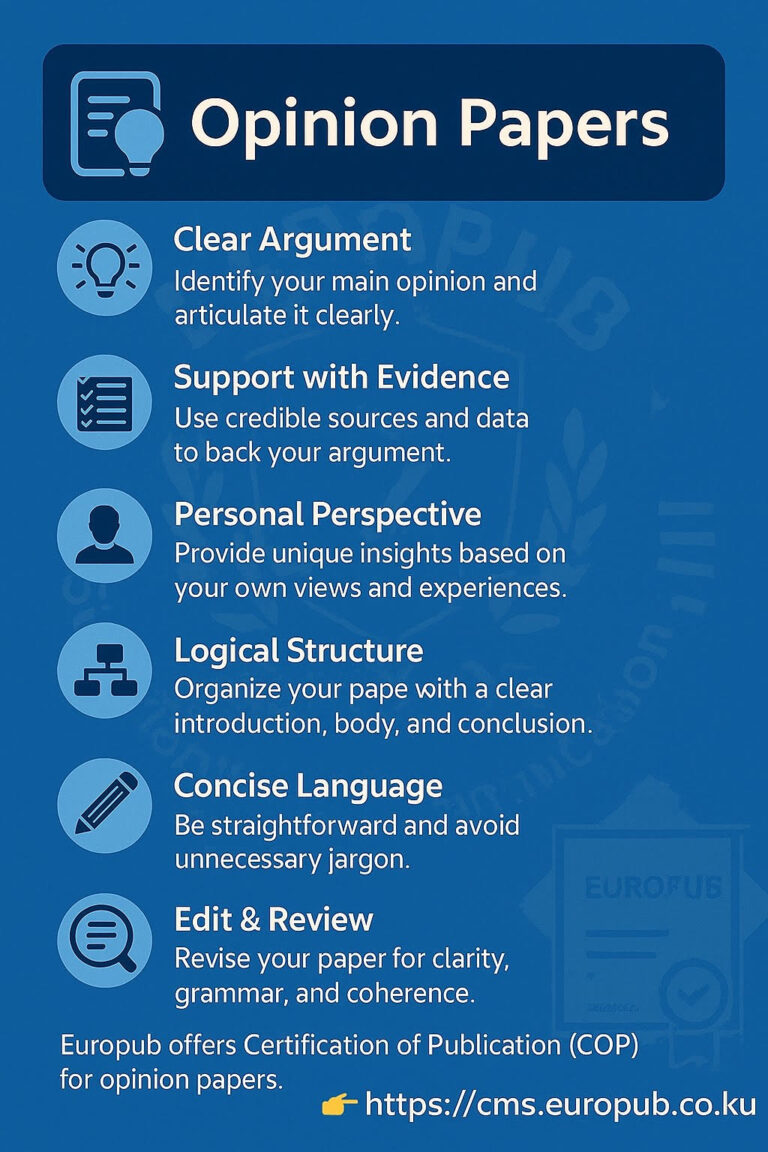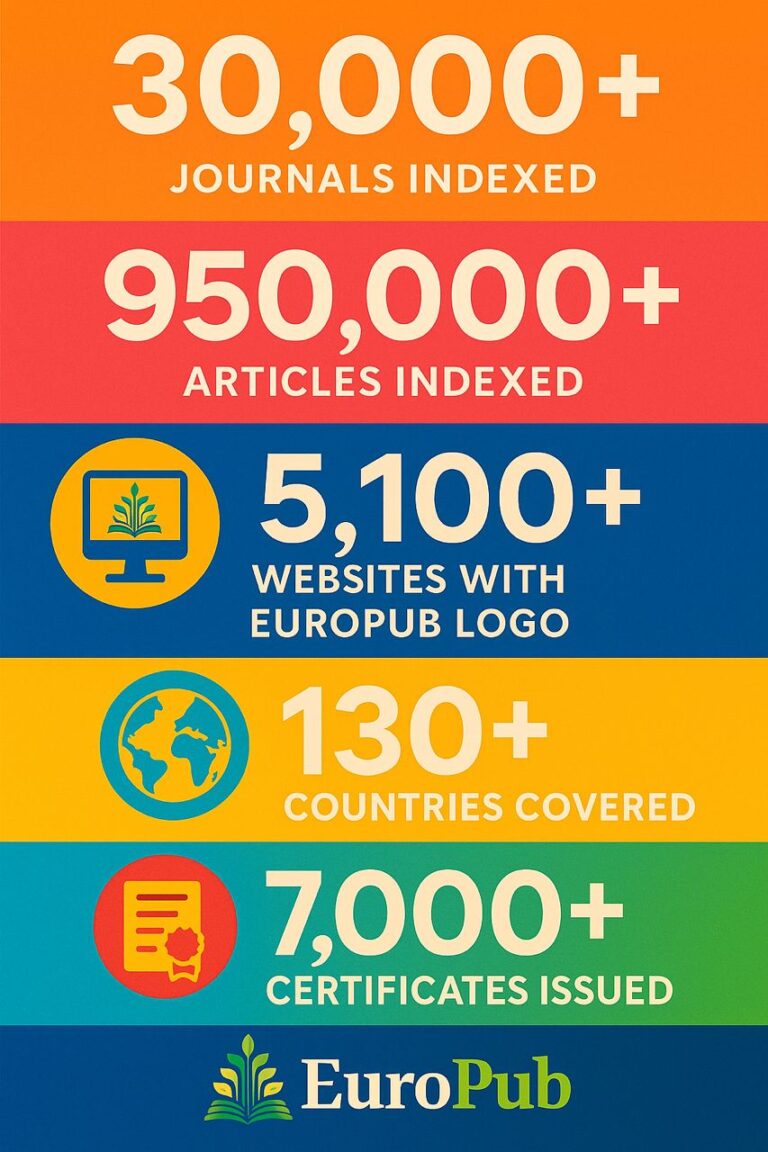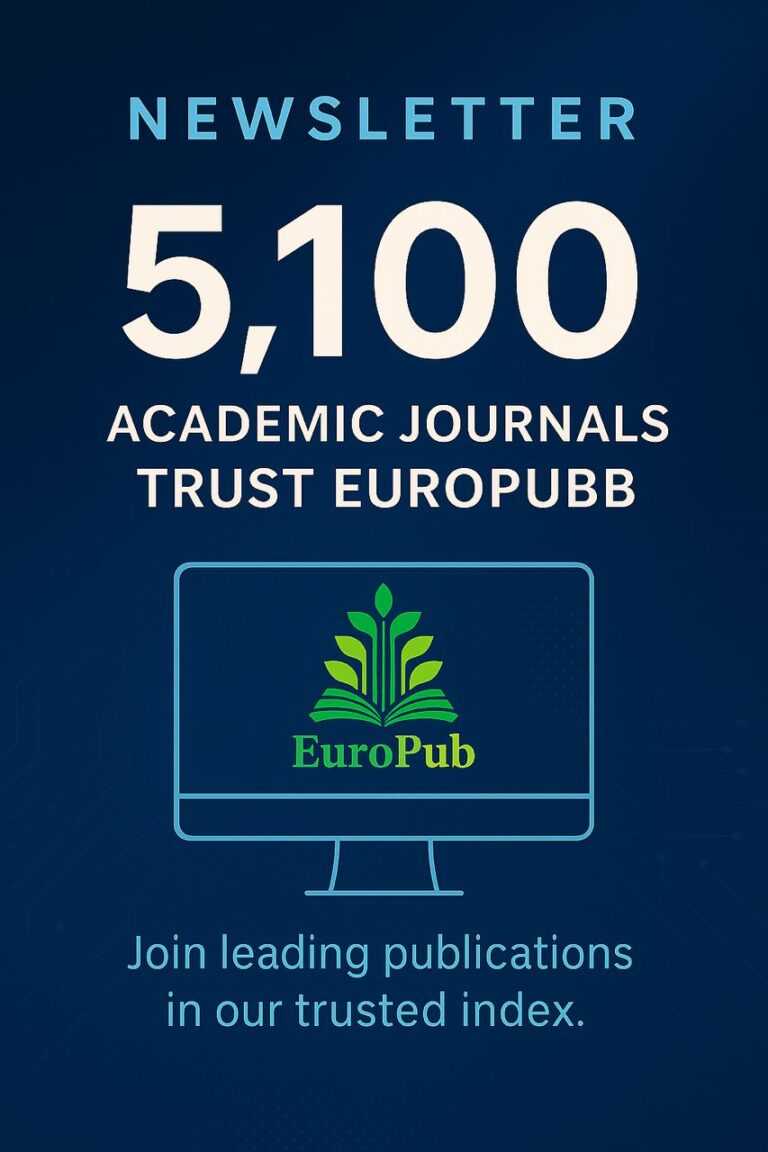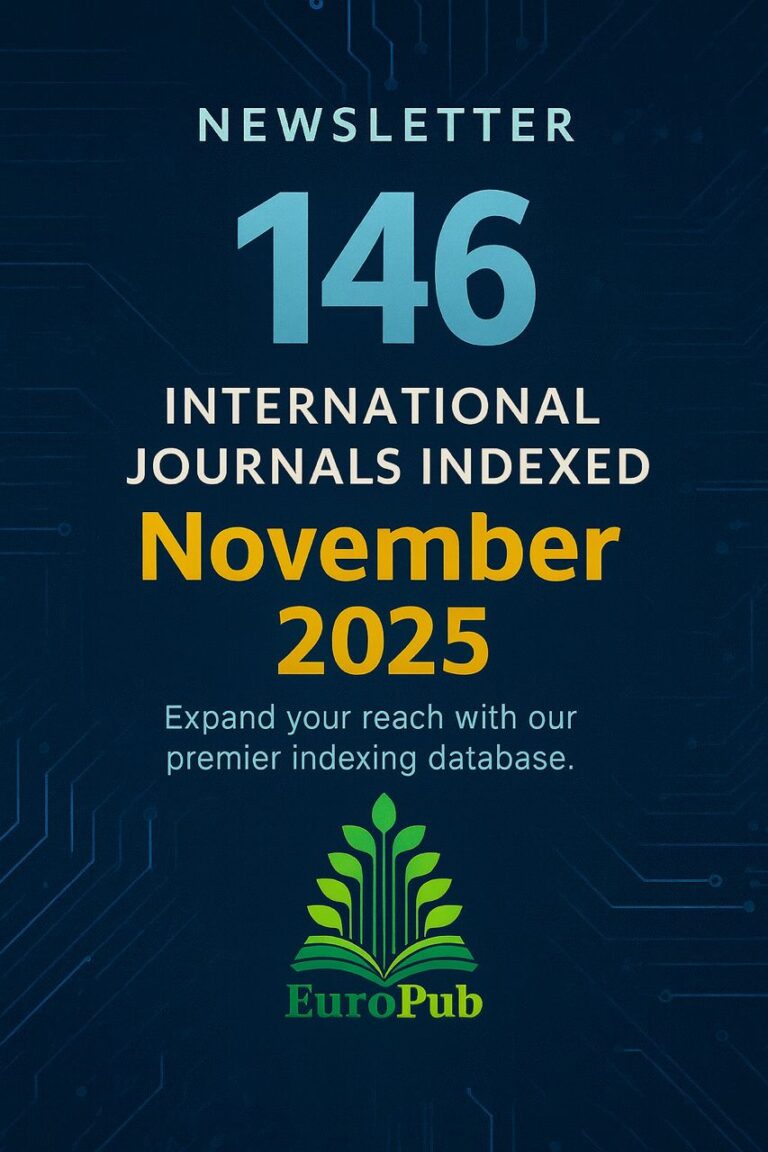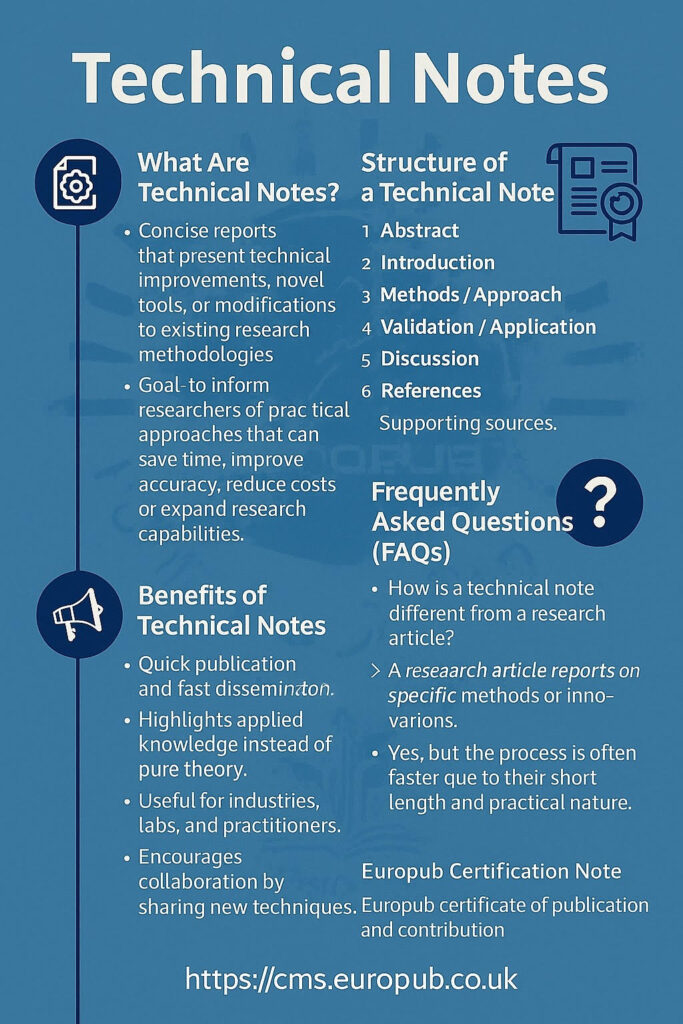
Technical Notes are short, focused scientific articles that describe innovative techniques, methods, experimental procedures, tools, or technical solutions in research and practice. They are widely used in engineering, medicine, computer science, natural sciences, and applied fields where methods and tools often evolve faster than theories.
 What are Technical Notes?
What are Technical Notes?
- Definition: Concise reports that present technical improvements, novel tools, or modifications to existing research methodologies.
- Goal: To inform other researchers of practical approaches that can save time, improve accuracy, reduce costs, or expand research capabilities.
- Format: Usually shorter than full research papers (1,500–3,000 words).
 Structure of a Technical Note
Structure of a Technical Note
- Abstract – Concise summary of the innovation or technique.
- Introduction – The problem or limitation addressed.
- Methods / Approach – Step-by-step description of the new tool or method.
- Validation / Application – Evidence of functionality, reliability, or improvement.
- Discussion – How the note contributes to the field.
- References – Supporting sources.
 Benefits of Technical Notes
Benefits of Technical Notes
- Quick publication and fast dissemination.
- Highlights applied knowledge instead of pure theory.
- Useful for industries, labs, and practitioners.
- Encourages collaboration by sharing new techniques.
 Frequently Asked Questions (FAQs)
Frequently Asked Questions (FAQs)
Q1: How is a technical note different from a research article?
 A research article reports on complete studies, while a technical note focuses on specific methods or innovations.
A research article reports on complete studies, while a technical note focuses on specific methods or innovations.
Q2: Do technical notes go through peer review?
 Yes, but the process is often faster due to their short length and practical nature.
Yes, but the process is often faster due to their short length and practical nature.
Q3: Can a technical note be cited in the same way as research papers?

 Yes. Technical notes are indexed in Scopus, Web of Science, and Google Scholar if the hosting journal is indexed.
Yes. Technical notes are indexed in Scopus, Web of Science, and Google Scholar if the hosting journal is indexed.
Q4: What are examples of technical notes?
- A new lab equipment calibration method.
- A novel statistical software plugin for data analysis.
- An innovative imaging or measurement technique.
Q5: Who should write a technical note?
 Researchers, engineers, clinicians, or software developers who want to share practical solutions.
Researchers, engineers, clinicians, or software developers who want to share practical solutions.
Q6: What length and format is expected?
 Usually 2–4 pages, limited figures, tables, and references, but enough to replicate the method.
Usually 2–4 pages, limited figures, tables, and references, but enough to replicate the method.
Q7: Do journals in all fields accept technical notes?
 Most major publishers (Elsevier, Springer, Wiley, IEEE) have technical note or methods sections.
Most major publishers (Elsevier, Springer, Wiley, IEEE) have technical note or methods sections.
Q8: Can technical notes contribute to academic career metrics?
 Yes. Since they are indexed, they add to h-index, citations, and publication count.
Yes. Since they are indexed, they add to h-index, citations, and publication count.
Q9: Do technical notes require funding disclosure and ethics approval?
 If human/animal data is used → ethics approval required. If not, usually not necessary.
If human/animal data is used → ethics approval required. If not, usually not necessary.
Q10: Can technical notes be later expanded into full articles?

 Yes, many technical notes become part of larger research projects later.
Yes, many technical notes become part of larger research projects later.
 Useful Links
Useful Links
- Springer – Types of Scientific Articles
- Elsevier Author Guidelines
- Wiley – How to Write Technical Notes
- Europub Certificate Management System → https://cms.europub.co.uk
- Europub News → https://news.europub.co.uk
 Europub Certification Note
Europub Certification Note
Europub offers official certificates for technical notes, covering:
- Certificate of publication
- Certificate of contribution (for co-authors)
- Certificate for peer reviewers and editors
 Apply here: https://cms.europub.co.uk
Apply here: https://cms.europub.co.uk
